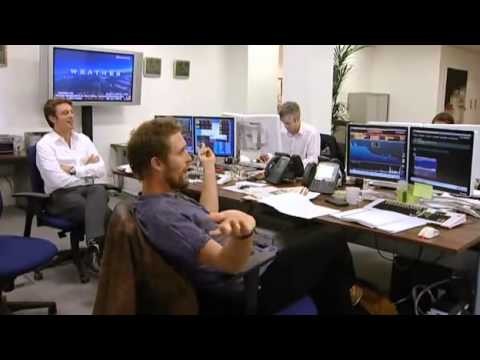Hedge Fund Wolverine Sees Stock Market Hitting Key Juncture
Post on: 17 Август, 2015 No Comment

Error.
Christopher Gust is an alumnus of two Midwestern institutions known to nurture talent. He played for the University of Michigan baseball team, which over the years has produced Hall of Famers like George Sisler. Gust got his start in finance at Chicago’s O’Connor & Associates, a former quantitative options-trading firm whose ranks have included hedge-fund founders such as Scott Prince, Matt Hulsizer, Jennifer Just and Paul Touradji.
Wolverine’s Gust says buyers can’t decide whether to take more risk or less: It’s a constant push and pull. Bob Stefko for Barron’s
Wolverine invests in what is broadly known as relative-value strategies. Its hedge fund is Wolverine Convertible Arbitrage, which has an average annualized return of 11.1% over the past seven years. This approach involves buying a convertible security like a bond, and selling short the same issuer’s common stock. A convertible bond has a lower yield than a regular bond, but offers the prospect of conversion to stock later on, giving it added upside potential.
The hedge-fund manager is trying to spot mispricing between the convertible and underlying stock in a way in which he or she can profit. If a company’s stock drops, the portfolio manager reaps a gain from the short equity position, and generally doesn’t lose as much on the more stable convertible bond. If the shares rise, the manager gains by converting the bond to equity, hopefully more than compensating for any losses on the shorted stock. Even small profits can be magnified by leverage, or borrowed funds.
Volatility is vital to convertible arbitrageurs, since they try to squeeze out many small profits from a lot of different positions.
Over the years, Wolverine has broadened its fund in order to trade event-driven strategies, closed-end funds and long-short equity bets. Although convertible arbitrage seeks solid returns, Gust’s fund has done better than that of late, making Barron’s Top 100 ranking of hedge-fund performance (see The Happy Warrior , May 23). It lost 25% in 2008, but then rebounded to a 55% gain in 2009, and scored another 15.5% rise in 2010. It’s up 4% this year through June 30. Partners and employees hold just over 20% of the $1.4 billion total assets under management. It charges 2% of assets and 20% of profits to its clients.
About 70% of Wolverine’s investment book is in various plays on a company’s capital structure, or its mix of short- and long-term debt, as well its common and preferred stock. It’s always looking for pricing discrepancies. The remaining 30% of assets is spread across event-driven investments like takeovers, closed-end funds, and long-short equity.
WHAT DISTINGUISHES Wolverine, Gust believes, is the enormous number of options that his hedge fund trades around a particular bet. We have about 35,000 instruments, or unique positions, in our portfolio, and roughly 28,000 of those are options. Wolverine could have as many as 3.2 million open-interest option contracts at any one time, he says. The firm is constantly adapting to options expirations and changing valuations.
This year has been unusual, because volatility has been low, but with several spikes from idiosyncratic events like the Middle East, or Japan’s horrible nuclear accident, notes Gust, who co-founded the firm with Robert Bellick. As a result, It’s been difficult to establish direction with volatility. Average daily volatility has been low, with several spikes due to macro events.
Over 2011, Gust, who’s 47, says that these surprising macro events have meant investors have had to pay an embedded premium for implied volatility in options versus actual volatility in options—and that persists to this day in the marketplace. As a result, Nobody wants to be short [volatility], but it’s not profitable to be long.

Gust believes the market has reached an important juncture. Investors have reduced leverage. They’re worried about binary events, big macro events. And yet the market continues to grind up[ward]. Macro strategies have struggled this year. But right now we’re at an inflection point, investors haven’t decided to have risk-on, but they’re not risk-off. There’s a constant push and pull.
Wolverine is wary of financials, given the complexity of the balance sheets and the uncertainty surrounding new regulations.
Instead, it’s bought what Gust calls mandies, or deals with mandatory conversion dates. The expiration date makes them similar to options, although they have an added benefit, dividends. Barron’s wrote about one such deal, General Motors’ (ticker: GM/B) mandatory convertible preferred (see Barrons.com, The Other Way to Play GM , Nov. 19, 2010). Wolverine doesn’t own GM convertibles.
One of Wolverine’s biggest positions is Vale Capital II 6.75% Notes Series VALE-2012. These are hybrid-debt securities convertible into American depositary receipts of Vale (CJS), the Brazilian iron-ore and mining giant. Wolverine’s fund bought the convertible bonds back at the initial offering in June 2009, and the bonds expire in June 2012. The Vale convertibles have a dividend yield of 6.75%, and convert at $50 a share in 2012. I feel confident that, by expiration, we will convert to our theoretical value, Gust says.
As is its practice, Wolverine buys and sells call and put options around hundreds of potential strike prices for every current and future month along the three-year term of the Vale mandatory convertible bond. Consistently, we find price dislocations between listed options and their debt securities, say, if the bond price moves too quickly, for example Gust says.
That will surely help Wolverine’s batting average.














